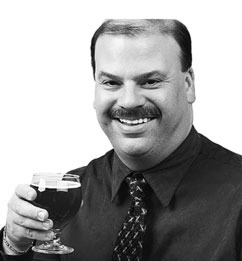With the holiday season upon us comes yet another opportunity to enjoy bubbles. From basic Prosecco to the most opulent Champagne, there are numerous choices to please just about any palate and to satisfy most budgets.
Although the wines from the French Champagne region (located roughly 100 miles East of Paris) started out as still wines, their fame and notoriety stems from what they are now renown for as celebration bubbly wines.
Their worldwide reputation gained momentum with the widespread development of sparkling (bubbly) Champagne in the late 17th century, although the still wines from the region had been produced from vines cultivated since the Roman empire and became widely popular across France since the 9th century and appreciated abroad, especially in England since the 13th century.
The first step in choosing the best suited bottle for your use ought to be to determine the specific purpose for your purchase. What exactly is the occasion for popping that cork?
If you’re planning on hosting a large group and pouring mimosas for your guests on New Year’s Day, skip the Champagne and choose a less expensive option like a Prosecco.
On the other hand, if you’re going to be popping the question to your sweetheart at midnight on New Year’s Eve, Champagne is a must.
Between the two above examples, there are many other delightful choices available. They include the afore-mentioned Prosecco from Italy, Cava from Spain, Crémant from several different regions in France, as well as sparkling wines from numerous other wine-producing provenances.
Some are also made using similar methods to those utilized to make actual Champagne; although only the wines native to that famed region can rightfully be called “Champagne.”
While the range of choices offers a diaspora of possible selections, allow me to introduce a winery from South Africa that caught my attention in recent years. It’s called “Graham Beck,” established in 1983 by the late Graham Beck.
A native of Cape Town, Beck was already a well-established and successful businessman who had carved a name for himself in the home renovation business, followed by ventures in coal mining and racehorse stud operations, when he opened his winery.
The wines from Champagne are made using the “Méthode Champenoise.” As mentioned above, because sparkling wines made outside of Champagne are not allowed to make any reference to anything related to Champagne, the method by which Graham Beck (and other South African sparkling wines are made), is called “Cap Classique.”
In other parts of the world, sparkling wines can be called “Méthod Traditionelle” ( i. e., traditional method). Prosecco on the other hand, is made utilizing the “Charmat” method, which allows for the secondary fermentation bubbles producing process to occur in fermentation tanks rather than in the actual bottle as it occurs in the traditional method.
Bubbly wines are often assumed to be dry, but not all of them are. To gauge the taste profile of a sparkling wine before buying it, you can refer to the guide below:
• Brut Zero (or Brut Nature): between 0 and 3 grams of residual sugar per liter = extremely dry (bone dry), on the palate.
• Extra Brut: Less than 6 grams of residual sugar per liter = very dry on the palate.
• Brut: Between 6 and 12 grams of residual sugar per liter = dry to the taste.
• Extra Dry: Between 12 and 17 grams of RS p/l = slightly dry.
• Sec: Between 17 and 32 grams of RS p/L = slightly sweet.
• Demi-sec: Between 32 and 59 grams of RS p/L = sweet.
• Doux: 50 grams of RS p/L = very sweet.
If you want to know more about Champagne, or wine in general; or if you have a question or a comment, please email me at: olivierthewineguy@ gmail.com.
“I only drink Champagne on two occasions. When I am in love, and when I am not.” -- Coco Chanel. Happy Holidays; please drink responsibly!








Comment
Comments